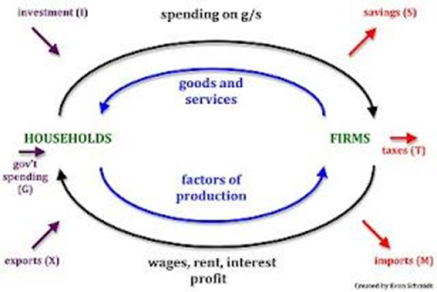The Circular Flow Model Analysis
Impact of Globalization on Countries
November 4, 2022Financial Implications of Natural Disaster in Pakistan
November 4, 2022The Circular Flow Model Analysis

The Circular Flow of Income Model
There are two main flows within the model shown above, the flow of physics, things, e.g. Good and services, and the flow of money, which pays for the physical things. There is a specific pattern that the circular flow of income follows: Production – Income – Expenditure – Production. As seen in the diagram above, the spending on goods and services is equal to the income receive by households, therefore National income = National expenditure.
If you need assistance with writing your essay, our professional essay writing service is here to help!
Though not all income produced will be spent on domestically produced goods. Some of the income is used to pay taxes or can be saved or spent on imported products and services. So saving, tax and imports are leakages in the circular flow model. Similarly, sometimes there can be extra spending in the economy, from government expenditure, investment and spending on exports, which is added to the circular flow model. These are called injections.
Aggregate means total and in this case the term is used to help measure how much is being spent by consumers, the government, firms and the people and businesses overseas.
“Aggregate demand (AD) = total spending on goods and services
The formula for calculating aggregate demand is as follows:
AD = C + I + G + (X-M)” (Riley, n.d.)
Consumers (C) – Can also be known as consumptions. This is what households spend on goods and services, with the exception of purchases of new housing.
Capital Investment (I) – This is the money spent on capital goods, e.g. equipment and new buildings to produce more for the consumers.
Government Spending (G) – the spending in goods and services including public goods and merit goods.
Exports (X) – The exports sold overseas are an inflow into the circular flow of income, and also spending adding to aggregate demand.

